#Thami El Glaoui
Photo
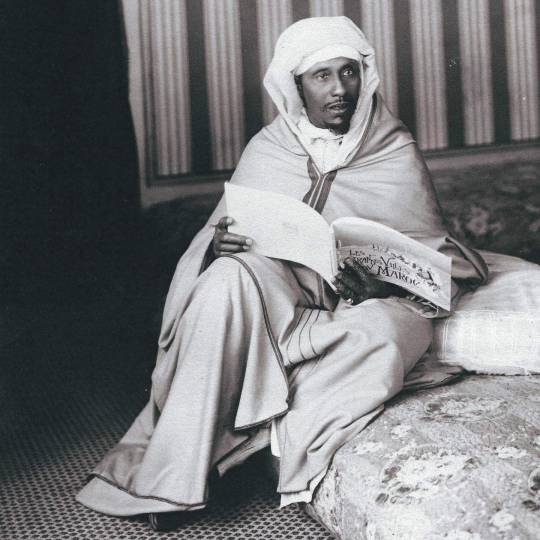
Thami El Glaoui (التهامي الكلاوي) - “Black Panther of Morocco, Lord of the Atlas” (1879-1956)
41 notes
·
View notes
Text

Thami El Mezouari El Glaoui, Pasha of Marrakesh and Berber leaders from Morocco
French vintage postcard
#el glaoui#historic#thami#marrakesh#pasha#photo#briefkaart#vintage#leaders#sepia#photography#mezouari#carte postale#morocco#glaoui#postcard#thami el#postkarte#postal#tarjeta#ansichtskarte#french#old#ephemera#postkaart#el#berber
5 notes
·
View notes
Photo

The beauty of Dar elbasha ❤️ 💡Dar El bacha Built in 1910, the Dar el Bacha, which means "house of the pasha", was the residence of Thami El Glaoui, who was given the title of pasha (roughly "governor" or other high official) of Marrakech by the Sultan Moulay Youssef in 1912. For years he was the most powerful political figure of the Moroccan south under French rule. He built his private palace on a lavish scale to impress guests.Dar el Bacha represents a beautiful example of Moroccan architecture, with fountains and orange trees in the central courtyard, traditional seating areas, and a hammam. 🏷Tag someone you’d love to visit Morocco with🔥✈️ 📸: 1. @elidrissi95_bouchra 2. @anotherlookofpictures 3. @anotherlookofpictures 4. @oubalmohamed 5. @kaycorniel 6. @moroccobyme 7. @elidrissi95_bouchra 8. @elidrissi95_bouchra 9. @zacscale 📍Morocco #morroco #morocco🇲🇦 #world #travelers #lookandsee #maroc #maghrib #moroccotravel #moroccotours #moroccoplaces #moroccovacations #moroccotrip #moroccotravels https://www.instagram.com/p/CpOGBKVMAIH/?igshid=NGJjMDIxMWI=
#morroco#morocco🇲🇦#world#travelers#lookandsee#maroc#maghrib#moroccotravel#moroccotours#moroccoplaces#moroccovacations#moroccotrip#moroccotravels
1 note
·
View note
Photo
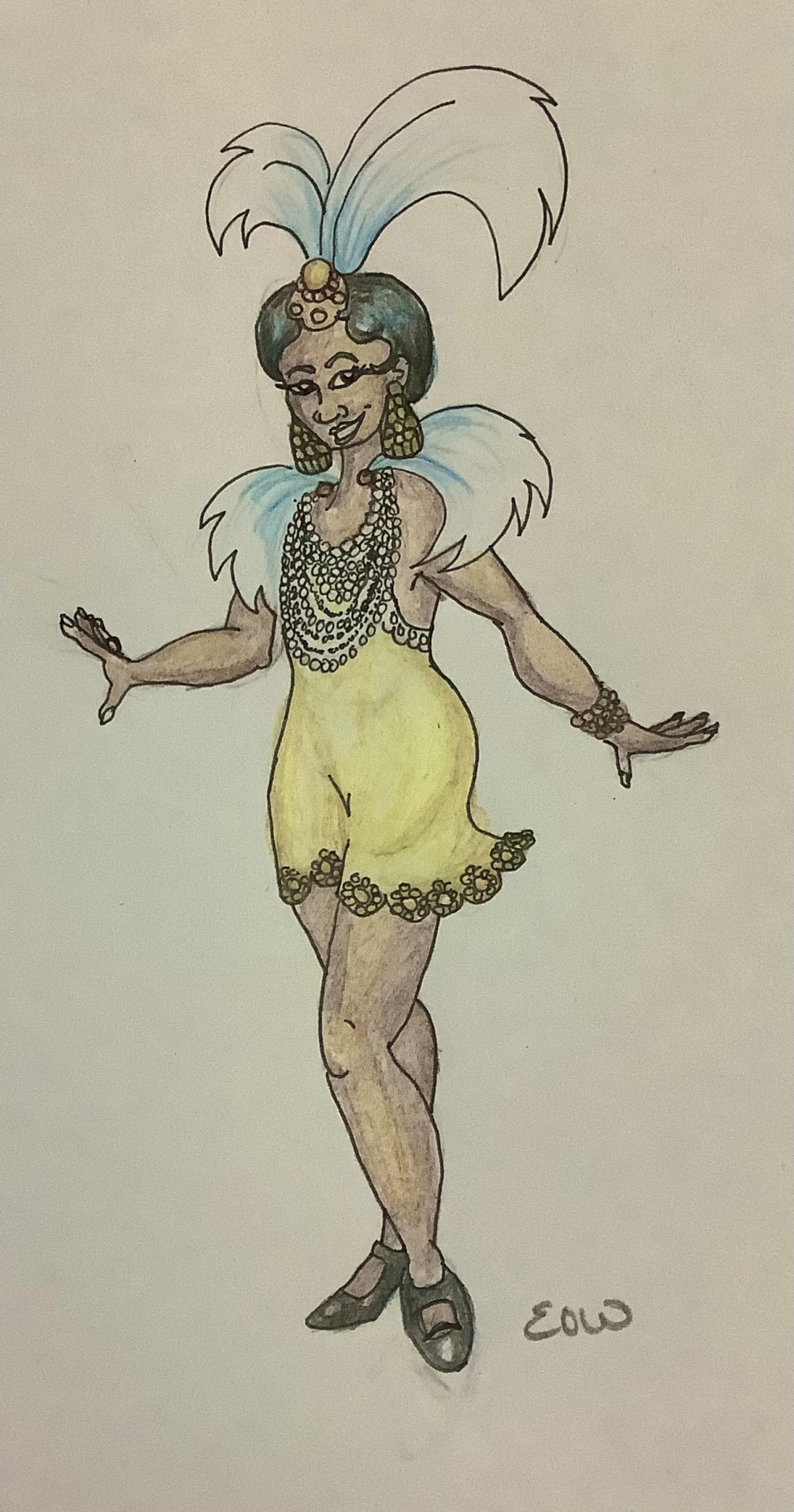
Day 3: the inimitable Josephine Baker.
Baker was born in segregated St Louis in 1906. She began a vaudeville career as a teenager, and, like many African American performers in the Roaring Twenties, travelled to France, where she became a rapid success, known for her provocative, boundary-pushing dances. There was still racism in France, but it wasn’t baked into law as it was in St. Louis.
That all changed in 1939, when France entered World War Two, and was soon overrun by the Nazis. Baker used her status as a celebrity to smuggle visas and information to the French Resistance. During a reconnaissance mission (and dance tour) to Spain and Morocco, however, Baker fell seriously ill. Her recovery was long and difficult (even with the assistance of her new friend, Thami El Glaoui, the Pasha of Merrakesh), but despite frequent relapses, she began putting in morale performances for the Free French in North Africa.
After the war, Baker was awarded both the Croix de Guerre and the Rosette de la Resistance. But her battles weren’t over. She began spending more time in the United States, getting involved in the growing Civil Rights movement and refusing to perform at segregated venues (during on incident, she was asked to leaved, and Grace Kelly stormed out after her in support). She was the only female speaker at MLK’s March on Washington.
Baker was married four times, and also had long term relationships with women . She adopted eleven children, and died peacefully in her sleep, just four days after her show-shopping, star-studded fiftieth anniversary performance.
(I need new colored pencils - these are washed out and and don’t photograph well - she looks so much prettier in person)
#Josephine Baker#black history#queer history#history#french resistance#wwii#civil rights movement#racism tw#nazi mention tw#my art#awesome ladies of history#october 2020
23 notes
·
View notes
Text
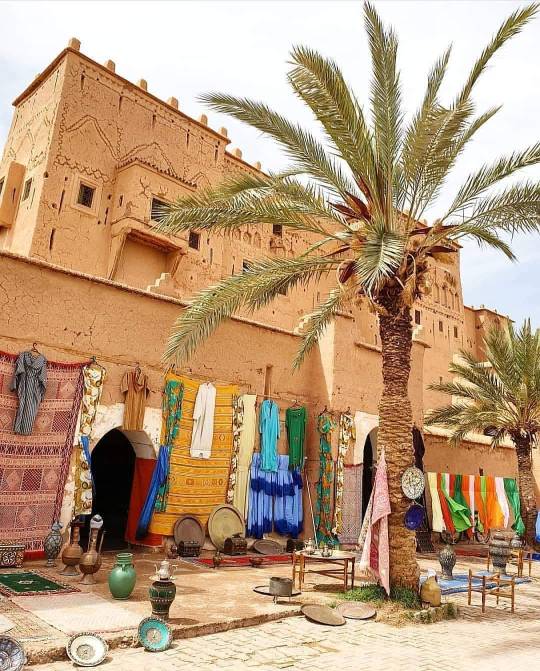
The Kasbah of Taourirt built in the thirties by the pasha of Marrakesh Thami El Glaoui who is known as the Lord of the Atlas, it was the largest Kasbah at that time and now it is considered as a historical patrimony.
Http://blog.mulaay.ws/
#morocco#moroccan#travel#africa#tourism#lifestyle#living#culture#traditional#atlas mountains#history#architecture#decoration#marrakesh#nature#people#highatlas#photography#desert#food#tea#view#amazigh#landscape#colours#patrimony#kasbah#taourirt#pasha#el glaoui
215 notes
·
View notes
Text
Explore Marrakech
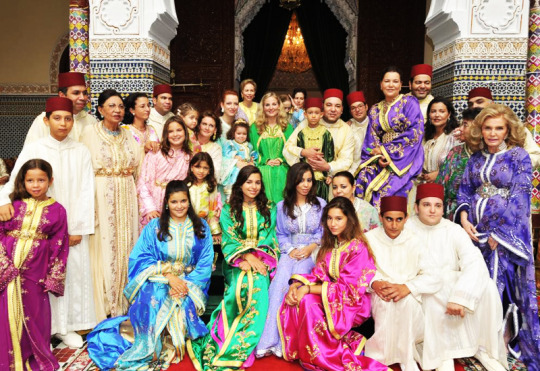
"Marrakech is one of the most beautiful cities that we know; comparable only to Baghdad. It is large and well built, surrounded by its massive ramparts, and has an abundant bazaar in all kinds of things. We see palaces, madrasas and magnificent mosques whose chief, called the Mosque of the Booksellers (kutubiyin) presents the highest minaret from which one can see the city in its entirety to the snowy mountains. "
Ibn Battuta (1304-1369)
(Traveller and Arab geographer)
After seven centuries, the description of the poet still seems topical.
Marrakech is the first tourist destination of Morocco. This magical imperial city has always been since its founding in 1070 by the Almoravid dynasty, the great Southern metropolis. The fame of Marrakech was designated as its all Morocco until the late nineteenth century. The heart of the city, surrounded by ramparts, contains the medina, a maze of narrow streets where we will be happy to get lost.
In April 2015, as a consecration, the famous website "TripAdvisor" Marrakech class as world number 1 destination, based on millions of votes.
THE PEARL OF THE SOUTH
Upon arrival, one is taken by the contrast of colors: the city, its pink adobe walls, its walls covered with bougainvillea from which arise bunches of palm trees and greenery, spectacular scenery snow-covered peaks of the High Atlas under a bright sky of intense blue that announces the true nature of Marrakech. The city is a lush oasis, perpetually sunny, hence exhale flowery scents of jasmine and orange blossom freshness gardens.
Inside the city walls, the zebra shadow of the sun, in the teeming streets of the medina, a hive of activity, punctuated with calls, voices, bright colors, cedar wood and scents spices. The sounds, colors and smells will meet to compose an amazing symphony.
Marrakech, mythical city, cultural capital, inspiring artists, fashions and events: Marrakech art galleries, festivals, exhibitions; Marrakech "people" with its celebrities, its luxurious palaces and trendy nights; Marrakech tourist capital for over a century, offers a fine balance between treasures of the past and ongoing energy of living cultures.
Yes, Marrakech is unforgettable. They come back, and each stay reserve discoveries. Some have never even left ...
HISTORY OF THE CITY
Epicurean and spiritual, humble and proud, pious and nocturnal, traditional and avant-garde, cosmopolitan and mysterious, Marrakesh the oldest and youngest of the imperial cities of the Kingdom, has for a thousand years made its honey of the many influences that have crossing and still feeding, at the gates of Europe, between mountain, desert and ocean, the oasis city of the great south, city of adorned art of incomparable finery of palaces and monuments, continues, with a confusing virtuosity, to make the synthesis between the past and the present; it is a symbol of well-being and sweetness of life, has built its legendary hospitality into an authentic lifestyle sought and appreciated by travelers from around the world.
Founded 1000 years ago, Marrakech has an incredible and uncommon history, marked by the brilliant periods of its history; today it retains a rich cultural heritage. It is up to us then to dive deeper into the periods that fascinate us.
THE ALMORAVID DYNASTY
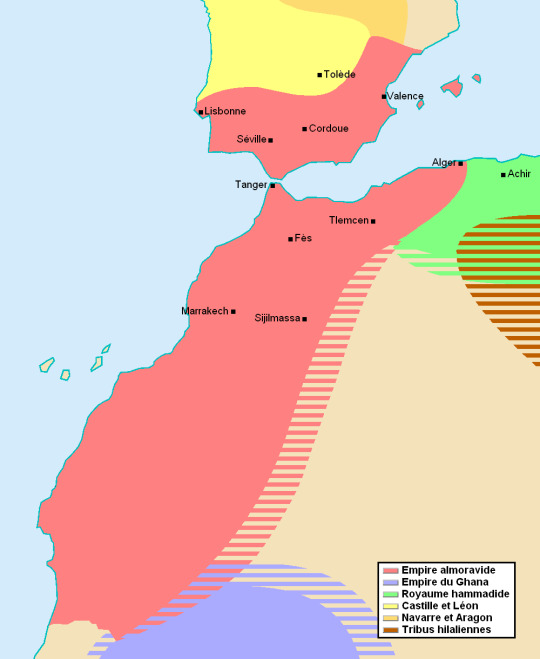
Marrakech was founded in 1062 by Youssef IbnTachfin, first ruler of the Almoravid dynasty. Simple caravan camp, the city becomes an important cultural, commercial, and religious center that shone throughout Morocco, Andalusia and Black Africa, thanks to the construction of many mosques and medersas (Koranic schools). Marrakech is elected capital of the kingdom. It is also at this time that the plantation of the Palmeraie began. The legend tells that by eating dates, Youssef IbnTachfin sprinkled the fruit stones, which found there fertile, soil to flourish and eventually lead to palm trees. Youssef IbnTachfin's son, Ali Ben Youssef built ramparts for several kilometers so that he can protect the city from attacks.
THE ALMOHAD DYNASTY
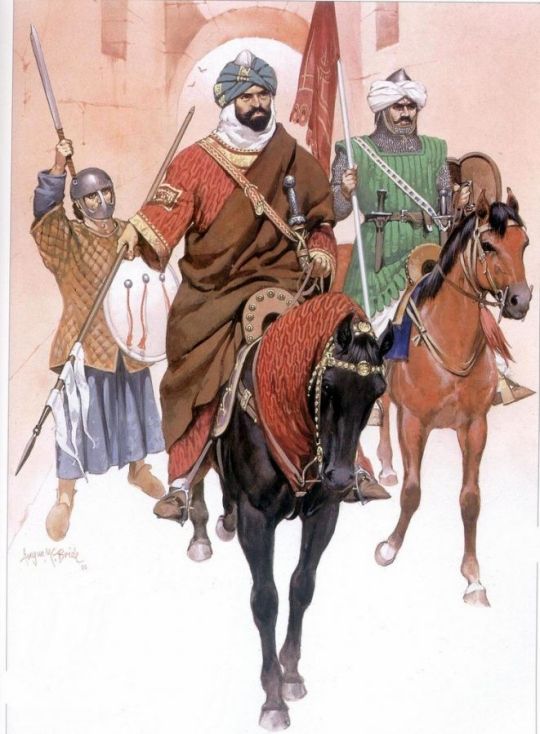
In 1147, Abd El-Moumen, founder of the Almohad dynasty, sieged Marrakech for nine months, and seized the city. The main buildings of Marrakech were razed. The Remparts, and the minaret of Koutoubia will be spared. During the reign of the first Almohad kings, "the red city" will be the capital of a prosperous empire. They built many palaces and religious buildings, such as the famous mosque of Koutoubia.
THE MERINID DYNASTY
At the end of the 13th century, the Marinid rulers overthrew the Almohad Caliphate, which controlled Morocco.The Marinid dynasty briefly held sway over all the Maghreb in the mid-14th century and were able to take Marrakech from the weakened Almohads. The city was then abandoned by its men of letters and artisans, in favor of Fez, which became the capital.
THE SAADIAN DYNASTY
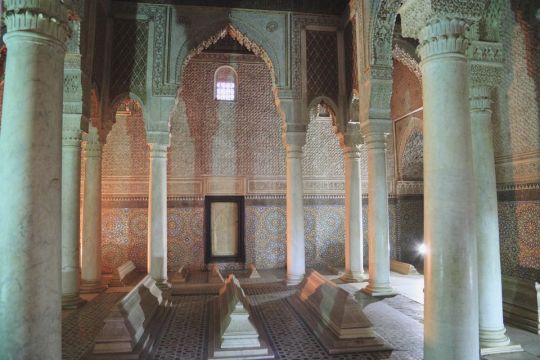
In the early 16th century, Marrakech became the capital of the kingdom. It also revives prosperity and beauty, thanks to the Saadian Sultan Ahmed El-Mansour, who built among others the El-Badii Palace, a replica of the Alhambra of Andalusia, as well as the Saadian tombs.
THE ALAOUITE DYNASTY

At the end of the Saadian dynasty, Marrakesh loses much of its prestige and heritage that falls into ruin. It was not until the reign of the Alawites (the currentMoroccan royal family) that the city regained some prestige with the restoration of the walls of the city, the Kasbah and the construction of new buildings and mosques. At the beginning of the 20th century, Marrakech experienced many political troubles. During this period, Marrakech was governed by Pasha Thami El Glaoui until the end of the protectorate. With the help of the French, EL Glaoui reigns in a despotic way, of which he represses the insurrections of the Berber tribes and became one of the most influential men of Morocco. In 1956, the end of the protectorate and the return of exile of Mohamed V marks the end of the reign of Glaoui.
Read the full article
1 note
·
View note
Text
JELILI ATIKU:THE FATHER OF NIGERIAN CONTEMPORARY PERFORMANCE ART RECONTEXTUALISING SOCIOPOLITICAL CULTURAL NORMS
Dalai Lama once said that "Open your arms to change, but don't let go of your values" this is one of the main inspiration behind Jelili Atiku Olorunfunmi performances by combining the local elements of Yoruba traditional performance with international contemporary performance art practice leading to the creation of action, symbols, storytelling, disguises, costumes, color, and color coding.
Born in the decade of Nigeria's independent from the British government after more than six decades of colonial rule and western life influence, he ventured into performance art as a result of what he called his "personal decolonization process" which help him to question everything or issues that relates to human living and the search for his own indigenous art tradition as a Yoruba man.
Jelili Atiku as he is commonly called can be describe as the "father of Nigeria contemporary performance art" considering the way he was able to transform performance art from its traditional practice to something even studio artists are envying among the different contemporary art genre in Nigerian art.
As a multidisciplinary artist, Jelili Atiku express his creativity and ideas through diverse mediums of expression such as drawing, painting, photography, video, and installation art. And like the words of Martin Luther King Jr. who avers that "Injustice anywhere is a threat to justice everywhere" Jelili performances focus on various political issues, human justice and rights based on the inspiration from the political body of the environment which are affecting the psychological, emotional, physical and mental state of the populace.
Jelili Atiku, an indegene of Ejigbo where he was also born on the 27th of September, 1968, and also received his early educations before proceeding to the Ahmadu Bello University, Zaria with Bachelor degree in sculpture and Master degree in sculpture from University of Lagos respectively. He is a father and a prince of the Ejigbo royal house.
As an artist, he has displayed his concepts and creativity through many artworks and performances which he enacted to address the multiple contemporary issues ranging from psycho-social and emotional effects of diverse events such as violence, war, poverty, corruption, climate change and etcetera facing the world at large.
Jelili Atiku is the founder and current artistic director of AFiRiPerFOMA, a platform established in 2011 for contemporary performance artists in Africa which has its headquarters in Ejigbo, Lagos state Nigeria. This platform focuses on the fusion of African cultures/ traditional African performance with the western type contemporary performance art practices and has hosted two biennials (Harare, Zimbabwe and Lagos, Nigeria).
Jelili performances includes;
I Trust You Know Oju-Ile (Alaraagbo XI) Progr, Bern,Switzerland, d(Friday June 24, 2016)
Agurmenta Dialogorum (What did I buy from you?), Museum Rietberg, Zürich, Switzerland (Sunday June 19, 2016)
Olúworíogbó (Alaaragbo III), Bern, Switzerland (Friday June 17, 2016)
Emi, Abi Emi Ko? (Alaraagbo X), Christiansborg Slot/ Det Kongelige Biblioteks Have/ Den Sorte Diamant, København, Denmark (Tuesday May 31, 2016)
If A Tree Falls In A Forest (Alaragbo IX), performance with Alette
Scavenius and Maria Grette , Strøget Amagertorv /Overgaden Institut for Samtidskunst, København, Denmark (Tuesday May 24, 2016),
“The Eyes of Saul and the Nose of David”, performance with Alette Scavenius at Christiansborg Slot, København, Denmark (Wednesday May 18, 2016)
Kill Not This Country (Maanifesito II), The Netherlands Embassy Lagos Office, Victoria Island, Lagos, Nigeria (Friday April 8, 2016)
I Accuse You finally, Tel Aviv, Israel (Wednesday March 16, 2016),
Ewedabira (Alaraagbo IV), African Studies Gallery, Tel Aviv,Israel (Tuesday March 15, 2016).
Aragamago Will Rid This Land off Terrorism, Ejigbo, Lagos, Nigeria (Thursday January 14, 2016).
Ewedabira (Alaraagbo IV), Place de la République, Paris, France (Sunday July 12, 2015)
Earth with Trees and Water I Am (Alaraagbo VIII), Place de la Sorbonne, Paris, France (Friday July 10, 2015)
Earth with Trees and Water I Am (Alaraagbo VIII), Rapid Pulse Performance Art Festival, Chicago, USA (Sunday June 14, 2015)
Earth with Trees and Water I Am (Alaraagbo VIII), Vidaråsen Landsby, Andebu, Norway (Thursday April 23, 2015)
Capacitance Does Not Consume Power, Department of Creative Arts, University of Lagos, Akoka, Lagos, Nigeria (Monday February 16, 2015)
Kill Not This Country (Maanifesito II), Ejigbo, Lagos, Nigeria (Thursday February 5, 2015)
Ori E Wambe, Ejigbo, Lagos, Nigeria (Wednesday January 28, 2015),
Arigisegi, School of Art and Printing Complex, Yaba College of Technology, Lagos, Nigeria (Friday January 23, 2015)
Holy Ovonramwen Cathedral, Igun Street, Benin City, Nigeria (December 6 -7, 2014)
Obaranikosi (In The Red Series #16), Hannover, Germany, (Saturday September 27, 2014)
Red or White (In The Red Series #1), 4th Mediations Biennale, Poznan, Poland, (Sunday September 21, 2014)
Eleegba (Oginrinringinrin III), Gordon Institute for Performing and Creative Arts (GIPCA) Live Art Festival, UCT Hiddingh Campus, Cape Town, South Africa, (Thursday 4 and Friday 5 September, 2014)
Intercourse With Wood (Alaraagbo VII), St. Pongratzen, Graz, Austria– enacted during Intercourse with Woods – collaboration with Eva Maria Ocherbauer, (Thursday August 28 – Saturday August 30, 2014)
Olu–konko, Aja–konko (Alaraagbo VI), St. Pongratzen, Graz, Austria–enacted during Intercourse with Woods – collaboration with Eva Maria Ocherbauer, (Wednesday August 27, 2014)
Omodigbo (Alaraagbo V), St. Pongratzen, Graz, Austria– enacted during Intercourse with Woods – collaboration with Eva Maria Ocherbauer, (Tuesday August 26, 2014)
Ewedabira (Alaraagbo IV), St. Pongratzen, Graz, Austria– enacted during Intercourse with Woods – collaboration with Eva Maria Ocherbauer, (Monday August 25, 2014)
Alaagba, performance with Anne Letailleur, Richardplatz / SAVVY Contemporary, Berlin, Germany (May 24, 2014)
Ologbere (Oginrinringinrin II), International Performance Art Festival
PALS (Performance Art Links), Slussen /Södermalmstorg and Fylkingen Stockholm, Sweden (April 27, 2014)
Egungun Alabala Mandela (Oginrinringinrin I), University of Texas at Austin, USA, (Friday April 11, 2014)
I Will Not Stroll With Thami El Glaoui, Marrakech Biennial 5, Marrakech, Morocco, (Wednesday - Friday February 26 - 28, 2014)
Afamako, Transmediale Festival, Haus der Kulturen der Welt, Berlin, Germany (Thursday January, 30, 2014)
Obaranikosi (In The Red Series #16), Nyhavn / Charlottenborg Copenhagen, Denmark (Saturday January, 25, 2014)
Lord Lugard Sings Blah Blah Green Sheep (Maanifisito I), Ejigbo, Lagos, Nigeria (Wednesday January 1, 2014)
I Will Travel in Africa Without Visa, Victoria Island, Lagos, Nigeria(Thursday December 19, 2013)
Obaranikosi (In The Red Series #16), Makoko/Third Mainland Bridge/Broad Street/ Federal Government Printing Press, Lagos, Nigeria (Thursday December 12, 2013)
Family Bond, Gunpo, South Korea (Friday September 6 – Thursday October 10, 2013)
Body in Space, Gunpo, South Korea (Sunday September 1 - Wednesday October 7, 2013)
Bill to Mayor, Gunpo, South Korea (Friday October 25, 2013), Body
+ Light + Gunpo, Gunpo, South Korea (Saturday October 19, 2013)
For Me To You, Gunpo, South Korea (Wednesday October 16, 2013)
I Am, God is, We Are One, (performance with Valerie Salez), Open Space, Victoria BC, Canada (Saturday September 28, 2013)
Oduduwa Meets Metis, Live International Performance Biennial, Vancouver BC, Canada (Sunday September 22, 2013)
Orunmila and Sotdae Visit You, Gunpo, South Korea (Thursday September 12, 2013)
Senator Yerima’s Wedding, Ejigbo, Lagos, Nigeria (Saturday August 10, 2013)
Red Light ((In The Red Series #6), Ejigbo, Lagos, Nigeria (Saturday July 6, 2013)
Isin’pari Baami (Araferaku Series #2), Ejigbo, Lagos, Nigeria (Saturday January 26, 2013)
Biofeedback (Araferaku Series #1), Ejigbo, Lagos, Nigeria (Thursday - Friday January 24 -25, 2013)
I Am 21st Century Man, Hilton Hotel, Abuja, Nigeria (Wednesday December 12, 2012)
Porondogo (The Feast Series #3), Freedom Park, Lagos, Nigeria (Thursday – Sunday (December 6 -9, 2012)
Where is Jelili Atiku? (Performance in collaboration with Lan Hungh) Lagos, Nigeria / Berlin, Germany (Sunday October 7, 2012)
Mukumuke With Wind, Bangor, North Wales, United Kingdom (Sunday August 12, 2012)
Voice from the Human Heart, performance in collaboration with Graham, Parliament Street, York (Thursday August 9, 2012)
How Not to Dance Tchaikovsky Symphony (In The Red Series #15),
Tiwani Contemporary, London, United Kingdom (Tuesday July 31, 2012)
We Are One, Chapel Stile, Cumbria, United Kingdom (Thursday July 26, 2012)
River Flows Through Us, Chapel Stile, Cumbria, United Kingdom (Thursday July 26, 2012)
The Quarry, Langdale, Cumbria, United Kingdom (Wednesday July 25, 2012)
Horse Through, Langdale, Cumbria, United Kingdom (Wednesday July 25, 2012)
Olúworíogbó (Alaaragbo III), Langdale, Cumbria, United Kingdom (Wednesday July 25, 2012)
Etutu (Alaaragbo II), Langdale, Cumbria, United Kingdom (Wednesday July 25, 2012)
In The Red Series (#14), Tate Modern, London, United Kingdom (Saturday July 21, 2012)
In (ut) Flöde (Alaaragbo I), Trädgårdspark, Kulturcentrum, Jarna, Sweden (Tuesday July 3, 2012)
Give Us This Day, performance with Joseph Sumégné), Limbe, Cameroun (Thursday April 12, 2012)
Abel’s Feast (The Feast Series #2), Yaoundé, Cameroun (Friday April 6, 2012)
Cain’s Feast (The Feast Series #1), Yaoundé, Cameroun (Saturday April 7, 2012)
Eleniyan (In The Red Series #13), Makerere University, Kampala, Uganda (Thursday February 16, 2012)
Isoro Ni Fesi (Occupy Nigeria #2), Centre For Contemporary Art,Lagos, Nigeria (Saturday January 28, 2012)
Nigerian Fetish (Occupy Nigeria #1), Ejigbo, Lagos, Nigeria (Friday January 13, 2012)
Red Carpet (In The Red Series #12), Cotonou, Republic of Benin (Saturday November 26, 2011)
Rawson’s Boat (Too Much With Us Series #1), Freedom Park, Lagos, Nigeria (Sunday November 20, 2011)
RED uctio AD AB surdum (In The Red Series #11), Lome, Togo (Sunday November 18, 2011)
Red Flag (In The Red Series #10), performance with Fisani Nkomo, Harare Gardens, Zimbabwe (Friday October 28, 2011)
58kg – 8kg, Oke-Afa Dumping Site, Isolo, Lagos, Nigeria (Tuesday March 31, 2011)
Okokojiya, performance with Wura-Natasha Ogunji, Imodo Compound, Ejigbo Lagos, Nigeria (Thursday March 19, 2011)
Even If I Wear Your Cloth, Centre for Contemporary Art, Sabo, Yaba, Lagos, Nigeria (Wednesday December 15, 2011)
Who Knows Who Cares, Centre for Contemporary Art, Sabo, Yaba, Lagos, Nigeria (Wednesday December 15, 2010)
NGA Bill...Kill Me The More, 12th Lagos Book and Art Festival, National Theatre, Iganmu, Lagos, Nigeria (Sunday November 14, 2010)
Gbanjo...mo gbe de, Textile Labour Union House, Ogba, Lagos, Nigeria (Friday October 1, 2010)
Quest for Gaia, Centre for Contemporary Art, Sabo, Yaba, Lagos, Nigeria (Tuesday March 2, 2010)
Corpus Cal-lu-sum (In The Red Series #9), performance with Petra Szilagyi, Ejigbo, Lagos, Nigeria (Saturday January 23, 2010)
Agbo Rago, 2nd African Summit and Exhibition on Visual Art (ARESUVA), International Conference Centre, Abuja, Nigeria (Thursday November 19, 2009)
Agbo Rago, 11th Lagos Book and Art Festival, National Gallery of Art, Aina Onabolu Building, Iganmu, Lagos, Nigeria (Saturday November 14, 2009)
Agbo Rago, Ejigbo Ram Market, Lagos, Nigeria (Sunday September 27, 2009)
Red Entangle (In The Red Series #8), Big Sight, Ariake, Tokyo, Japan (Sunday March 8, 2009)
Reddendum (In The Red Series #7), Fine Arts Department, Ahmadu Bello University, Zaria, Nigeria (Thursday February 26, 2009)
Red or White? ((In The Red Series #1), Fine Arts Department, Ahmadu Bello University, Zaria, Nigeria (Thursday February 26, 2009)
Red Light (In The Red Series #6), Fine Arts Department, Ahmadu Bello University, Zaria, Nigeria (Thursday February 26, 2009)
Redound (In The Red Series #5), Fine Arts Department, Ahmadu Bello University, Zaria, Nigeria (Thursday February 26, 2009)
2 notes
·
View notes
Text
EN IMAGES | L'art contemporain africain s'installe durablement à Marrakech
See on Scoop.it - Art africain contemporain
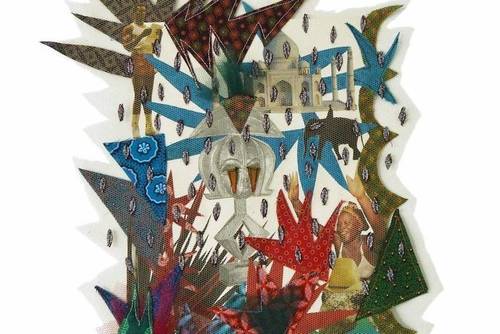
"Qui aurait parié en 2013, lors de son lancement à Londres, que la Foire 1:54 (...), dont l’objet est de promouvoir l’art contemporain africain, tracerait son sillon, au point d’essaimer à New York (2015), puis depuis l’an dernier à Marrakech. Le succès est bien là. Le choix de Marrakech a été naturel. Outre la vitalité culturelle de la ville, la fondatrice de la Foire 1-54, Touria El Glaoui, est aussi la petite fille de Thami El Glaoui, pacha de Marrakech. Et côté art, elle est tombée dans le bain grâce à son père, le célèbre peintre Hassan El Glaoui. « La foire est un événement inspirant, symbole de l’ébullition culturelle de la ville de Mararkech », commentait Touria El Glaoui pour l’ouverture de cette deuxième édition. Mais déjà l’an dernier, elle confiait au journal marocain l’Économiste : « Il est important qu’un événement qui traite de l’art contemporain africain se passe en Afrique, il faut que les Africains voient de l’art africain sur leur continent. » La ville est aussi idéalement située, à quelques heures d’avion de l’Europe, où résident les principaux collectionneurs."
> Diaporama et article complet publiés dans Le Point Afrique à retrouver sur http://bit.ly/2EUVvRT
0 notes
Photo
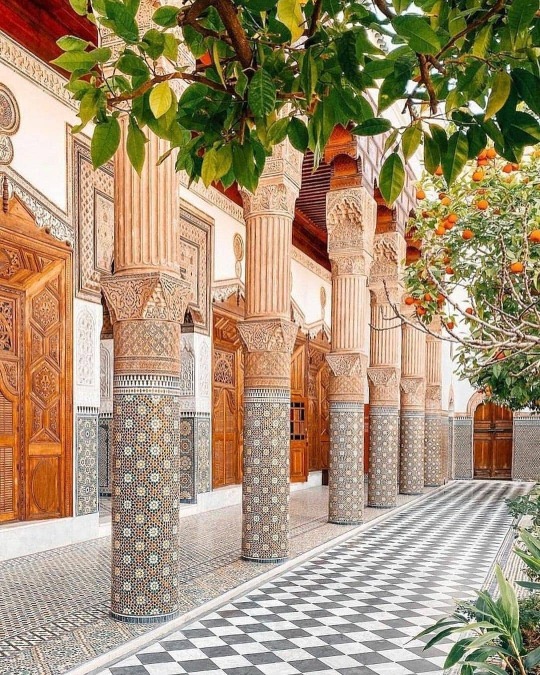
Built in 1910, the Dar el Bacha, which means "house of the pasha", was the residence of Thami El Glaoui, who was given the title of pasha (roughly "governor" or other high official) of Marrakech by the Sultan Moulay Youssef in 1912. For years he was the most powerful political figure of the Moroccan south under French rule. He built his private palace on a lavish scale to impress guests.[3] Some illustrious guests who visited Dar el Bacha include Colette, Maurice Ravel, Charlie Chaplin, Josephine Baker, Winston Churchill among others. I wish You Happiness wherever You Go 🤲 if You come from htags, explore. 👇 📸 By : @someoneju_ Don't forget to follow us 📧 Book your moroccan tours here: 🚩 Or: [email protected] CREDIT 👇 Use the tag and get featured! Tag us @berber_way_morocco_tours and use #berberwaymoroccotours Like what you see? FOLLOWG👉 Me 🔹🔹🔹🔹🔹🔹🔹🔹🔹🔹 #travelmorocco #morocco #inmorocco #simplymorocco #visitmorocco #travel #nature #travelphoto #travelpic #discovermorocco #maroc #moroccovacations #المغرب #travelife #travelingram #explore #مراكش #travelbug #worldplaces #earthpix #travelawesome #travels #traveltheworld #traveller #morocco🇲🇦 #marruecos #marocaine🇲🇦 #morroco #marrakech (at Morocco) https://www.instagram.com/p/CSZOvlJDACh/?utm_medium=tumblr
#berberwaymoroccotours#travelmorocco#morocco#inmorocco#simplymorocco#visitmorocco#travel#nature#travelphoto#travelpic#discovermorocco#maroc#moroccovacations#المغرب#travelife#travelingram#explore#مراكش#travelbug#worldplaces#earthpix#travelawesome#travels#traveltheworld#traveller#morocco🇲🇦#marruecos#marocaine🇲🇦#morroco#marrakech
1 note
·
View note
Photo
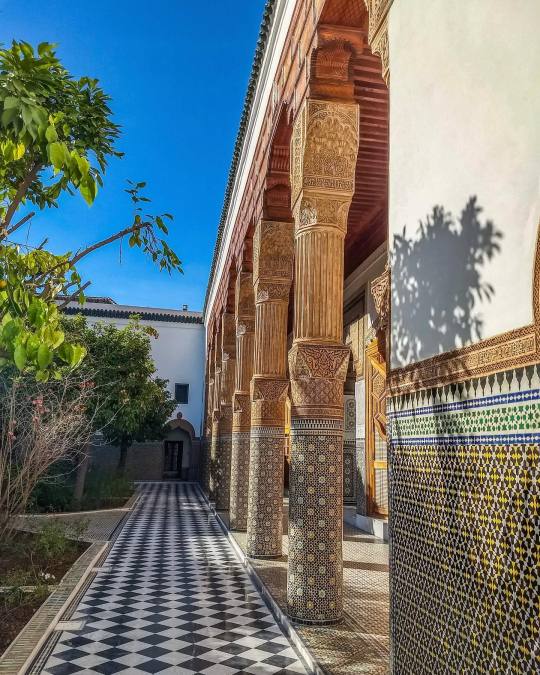
Dar el Bacha is a Marrakech landmark - it’s the former palace home of Thami El Glaoui, the Pasha of Marrakech from 1912 to 1956. A large part of the palace has been restored and opened as the Musée des Confluences. Definitely a must see - go for the astonishing architecture and tile work. It’s also home to Bacha Coffee. . . . #marrakesh #riad #morocco🇲🇦 — view on Instagram https://ift.tt/3zy0Qd8
0 notes
Text
【摩洛哥】馬拉喀什|文明交匯博物館 X 60年精品咖啡店
摩洛哥位於阿拉伯世界的最西面,與西班牙只隔著15公里的直布羅陀海��,長久以來同歐洲的交往頻繁,曾經被法國西班牙統治過,所以有人叫摩洛哥做阿拉伯世界的加州,文化上比較接近歐洲,是個世俗化的回教國家。位於歐洲,非洲和阿拉伯世界的交界,不同的文化互相交匯,在秘密花園附近的文化交匯博物館 Musee des Confluences 就展示了示同文化在摩洛哥的影響,是馬拉喀什的隱藏景點。
Musee des Confluences
Musee des Confluence 本身來頭也不少,原名叫 Dar El Bacha,建於 1910 年,是帕帕爾貴族 Thami El Glaoui 的大宅。第一次世界大戰前,正如北非諜影一樣,摩洛哥牽涉了法國和德國的利益,兩國都想獨佔摩洛哥。Thami El Glaoui…
View On WordPress
0 notes
Text
Thami El Glaoui, the pasha who led a striking lifestyle - The Media Hq
http://dlvr.it/RMd7tH
0 notes
Text
The French protectorate in Morocco (French: Protectorat français au Maroc; Arabic: حماية فرنسا في المغرب Ḥimāyat Faransā fi-l-Maḡrib) was established by the Treaty of Fez. It existed from 1912, when a protectorate was formally established, until independence (18 November 1955), and consisted of the area of Morocco between the Corridor of Taza and the Draa River.
This slideshow requires JavaScript.
Prelude
Despite the weakness of its authority, the Alaouite dynasty distinguished itself in the 18th and 19th centuries by maintaining Morocco’s independence while other states in the region succumbed to French or British domination. However, in the latter part of the 19th century, Morocco’s weakness and instability invited European intervention to protect threatened investments and to demand economic concessions. The first years of the 20th century witnessed a rush of diplomatic manoeuvring through which the European powers and France in particular furthered their interests in North Africa.
French activity in Morocco began during the end of the 19th century. In 1904 the French government was trying to establish a protectorate over Morocco, and had managed to sign two bilateral secret agreements with Britain (8 April 1904, see Entente cordiale) and Spain (7 October 1904), which guaranteed the support of the powers in question in this endeavour. France and Spain secretly partitioned the territory of the sultanate, with Spain receiving concessions in the far north and south of the country.
First Moroccan Crisis: March 1905 – May 1906
The First Moroccan Crisis grew out of the imperial rivalries of the great powers, in this case, between Germany on one side and France, with British support, on the other. Germany took immediate diplomatic action to block the new accord from going into effect, including the dramatic visit of Wilhelm II to Tangier in Morocco on March 31, 1905. Kaiser Wilhelm tried to get Morocco’s support if they went to war with France or Britain, and gave a speech expressing support for Moroccan independence, which amounted to a provocative challenge to French influence in Morocco.
In 1906 the Algeciras Conference was held to settle the dispute, and Germany accepted an agreement in which France agreed to yield control of the Moroccan police, but otherwise retained effective control of Moroccan political and financial affairs. Although the Algeciras Conference temporarily solved the First Moroccan Crisis it only worsened international tensions between the Triple Alliance and the Triple Entente.
First Moroccan Crisis: March 1905 – May 1906
The First Moroccan Crisis grew out of the imperial rivalries of the great powers, in this case, between Germany on one side and France, with British support, on the other. Germany took immediate diplomatic action to block the new accord from going into effect, including the dramatic visit of Wilhelm II to Tangier in Morocco on March 31, 1905. Kaiser Wilhelm tried to get Morocco’s support if they went to war with France or Britain, and gave a speech expressing support for Moroccan independence, which amounted to a provocative challenge to French influence in Morocco.
In 1906 the Algeciras Conference was held to settle the dispute, and Germany accepted an agreement in which France agreed to yield control of the Moroccan police, but otherwise retained effective control of Moroccan political and financial affairs. Although the Algeciras Conference temporarily solved the First Moroccan Crisis it only worsened international tensions between the Triple Alliance and the Triple Entente.
Agadir Crisis
The French artillery at Rabat in 1911
In 1911, a rebellion broke out in Morocco against the Sultan, Abdelhafid. By early April 1911, the Sultan was besieged in his palace in Fez and the French prepared to send troops to help put down the rebellion under the pretext of protecting European lives and property. The French dispatched a flying column at the end of April 1911 and Germany gave approval for the occupation of the city. Moroccan forces besieged the French-occupied city. Approximately one month later, French forces brought the siege to an end. On 5 June 1911, the Spanish occupied Larache and Ksar-el-Kebir. On 1 July 1911, the German gunboat Panther arrived at the port of Agadir. There was an immediate reaction from the French, supported by the British.
French protectorate 1912–1956
France officially established a protectorate over Morocco with the Treaty of Fez, ending what remained of the country’s de facto independence. From a strictly legal point of view, the treaty did not deprive Morocco of its status as a sovereign state. The Sultan reigned but did not rule. Sultan Abdelhafidabdicated in favour of his brother Yusef after signing the treaty. On April 17, 1912, Moroccan infantrymen mutinied in the French garrison in Fez, in the 1912 Fes riots The Moroccans were unable to take the city and were defeated by a French relief force. In late May 1912, Moroccan forces again unsuccessfully attacked the enhanced French garrison at Fez.
French Moroccan medal
Bond of the French protectorate Morocco, issued 1st March 1918
In establishing their protectorate over much of Morocco, the French had behind them the experience of the conquest of Algeria and of their protectorate over Tunisia; they took the latter as the model for their Moroccan policy. There were, however, important differences. First, the protectorate was established only two years before the outbreak of World War I, which brought with it a new attitude toward colonial rule. Rejecting the typical French assimilationist approach to culture and education as a liberal fantasy, Morocco’s conservative French rulers attempted to use urban planning and colonial education to prevent cultural mixing and to uphold the traditional society upon which the French depended for collaboration. Second, Morocco had a thousand-year tradition of independence and had never been subjected to Ottoman rule, though it had been strongly influenced by the civilization of Muslim Iberia and there were periods during the Almoravid and Alhomad dynasties when areas on both sides of the Strait of Gibraltar were under the same rulers. These circumstances and the proximity of Morocco to Spain created a special relationship between the two countries.
Morocco was also unique among the North African countries in possessing a coast on the Atlantic, in the rights that various nations derived from the Conference of Algeciras, and in the privileges that their diplomatic missions had acquired in Tangier. Thus the northern tenth of the country, with both Atlantic and Mediterranean coasts, were excluded from the French-controlled area and treated as a Spanish protectorate.
Although being under the protectorate, Morocco retained –de jure– its personality as a state in international law, according to an International Court of Justice statement, and thus remained a sovereign state, without discontinuity between pre-colonial and modern entities. In fact, the French enjoyed much larger powers.
Under the protectorate, French civil servants allied themselves with the French colonists and with their supporters in France to prevent any moves in the direction of Moroccan autonomy. As pacification proceeded, the French government promoted economic development, particularly the exploitation of Morocco’s mineral wealth, the creation of a modern transportation system, and the development of a modern agriculture sector geared to the French market. Tens of thousands of colonists entered Morocco and bought up large amounts of the rich agricultural land. Interest groups that formed among these elements continually pressured France to increase its control over Morocco.
Lyautey and the Protectorate (1912–1925)
Hubert Lyautey, the first Resident-General of the protectorate, was an extraordinary personality with royalist leanings who made it his mission to develop Morocco. Unlike his compatriots, Lyautey didn’t believe that France should annex Morocco like French Algeria but rather remodel and re-educate Moroccan society. He promised that in this process that he would:
offend no tradition, change no custom, and remind ourselves that in all human society there is a ruling class, born to rule, without which nothing can be done… enlist the ruling class in our service…. and the country will be pacified, and at far less cost and with greater certainty than by all the military expeditions we could send there
Lyautey’s vision was ideological: a powerful pro-French westernized monarchy that would work with France and look to France for culture and aid. Unlike in Algeria where the entire nobility and government was displaced, Lyautey worked with the Moroccan nobility, offering them support and even building elite private schools where they could send their children (a benefit not given to the majority of Moroccans). One notable product of this schooling is Thami El Glaoui.
Lyautey allowed the sultan to retain his powers: he issued decrees in his own name and seal and was allowed to remain the religious leader of Morocco. He was even allowed an all-Arab court. Lyautey once said:
In Morocco, there is only one government, the sharifian government, protected by the French
Walter Burton Harris, a British journalist who wrote extensively on Morocco, wrote:
At the Moorish court. scarcely a European is to be seen, and to the native who arrives at the Capital there is little or no visible change from what he and his ancestors saw in the past
Opposition to French control
Rif Rebellion
Sultan Yusef‘s reign, from 1912 to 1927, was turbulent and marked with frequent uprisings against Spain and France. The most serious of these was a Berber uprising in the Rif Mountains, led by Abd el-Krim who managed to establish a republic in the Rif. Though this rebellion originally began in the Spanish-controlled area in the north of the country, it reached to the French-controlled area until a coalition of France and Spain finally defeated the rebels in 1925. To ensure their own safety, the French moved the court from Fez to Rabat, which has served as the capital of the country ever since.
Nationalist parties
In December 1934, a small group of nationalists, members of the newly formed Moroccan Action Committee (Comité d’Action Marocaine – CAM), proposed a Plan of Reforms that called for a return to indirect rule as envisaged by the Treaty of Fez, admission of Moroccans to government positions, and establishment of representative councils. The moderate tactics used by the CAM to obtain consideration of reform – including petitions, newspaper editorials, and personal appeals to French. Nationalist political parties, which subsequently arose under the French protectorate, based their arguments for Moroccan independence on such World War II declarations as the Atlantic Charter.
During World War II, the badly divided nationalist movement became more cohesive and informed Moroccans dared to consider the real possibility of political change in the post-war era. However, the nationalists were disappointed in their belief that the Allied victory in Morocco would pave the way for independence. In January 1944, the Istiqlal Party, which subsequently provided most of the leadership for the nationalist movement, released a manifesto demanding full independence, national reunification, and a democratic constitution. The sultan had approved the manifesto before its submission to the French resident general, who answered that no basic change in the protectorate status was being considered.
Exile of Sultan Mohammed
The general sympathy of the sultan for the nationalists had become evident by the end of the war, although he still hoped to see complete independence achieved gradually. By contrast, the residency, supported by French economic interests and vigorously backed by most of the colonists, adamantly refused to consider even reforms short of independence. Official intransigence contributed to increased animosity between the nationalists and the colonists and gradually widened the split between the sultan and the resident general.
Mohammed V and his family were transferred to Madagascar in January 1954. His replacement by the unpopular Mohammed Ben Aarafa, whose reign was perceived as illegitimate, sparked active opposition to the French protectorate both from nationalists and those who saw the sultan as a religious leader. By 1955, Ben Arafa was pressured to abdicate; consequently, he fled to Tangier where he formally abdicated.
Later on, faced with a united Moroccan demand for the sultan’s return, on a great scale, rising violence in Morocco, and the deteriorating situation in Algeria, Mohammed V was returned from exile on November 16, 1955, and declared independence on November 18, 1955. In February 1956 he successfully negotiated with France to enforce the independence of Morocco, and in 1957 took the title of King.
1956 independence
In late 1955, Mohammed V successfully negotiated the gradual restoration of Moroccan independence within a framework of French-Moroccan interdependence. The sultan agreed to institute reforms that would transform Morocco into a constitutional monarchy with a democratic form of government. In February 1956, Morocco acquired limited home rule. Further negotiations for full independence culminated in the French-Moroccan Agreement signed in Paris on March 2, 1956. On April 7 of that year, France officially relinquished its protectorate in Morocco. The internationalized city of Tangier was reintegrated with the signing of the Tangier Protocol on October 29, 1956. The abolition of the Spanish protectorate and the recognition of Moroccan independence by Spain were negotiated separately and made final in the Joint Declaration of April 1956. Through these agreements with Spain in 1956 and 1958, Moroccan control over certain Spanish-ruled areas was restored, though attempts to claim other Spanish possessions through military action were less successful.
In the months that followed independence, Mohammed V proceeded to build a modern governmental structure under a constitutional monarchy in which the sultan would exercise an active political role. He acted cautiously, having no intention of permitting more radical elements in the nationalist movement to overthrow the established order. He was also intent on preventing the Istiqlal Party from consolidating its control and establishing a one-party state. In August 1957, Mohammed V assumed the title of king.
Monetary policy
The French minted coinage for use in the Protectorate from 1921 until 1956, which continued to circulate until a new currency was introduced. The French minted coins with a denomination of francs, which were divided into 100 centimes. This was replaced in 1960 with the reintroduction of the dirham, Morocco’s current currency.
The Algeciras Conference gave concessions to the European bankers, ranging from a newly formed State Bank of Morocco to issuing banknotes backed by gold, with a 40-year term. The new state bank was to act as Morocco’s Central Bank, but with a strict cap on the spending of the Sherifian Empire, with administrators appointed by the national banks that guaranteed the loans: the German Empire, United Kingdom, France and Spain.
Postal history
A French postal agency had sent mail from Tangier as early as 1854, but the formal beginning of the system was in 1891 when French post offices were established throughout the sultanate. The office’s issued postage stamps of France surcharged with values in pesetas and centimos, at a 1–1 ratio with the denominations in French currency, using both the Type Sage issues and after 1902, Mouflon issue inscribed “MAROC” (which were never officially issued without the surcharge). In 1911, the Mouflon designs were overprinted in Arabic; in the same year, the Sherifian post was created to handle local mail, using special stamps.
The first stamps of the protectorate appeared 1 August 1914, and were just the existing stamps with the additional overprint reading “PROTECTORAT FRANCAIS”. The first new designs were in an issue of 1917, consisting of 17 stamps in six designs, denominated in centimes and francs, and inscribed “MAROC”.
Railways
Morocco had from 1912–1935 one of the largest 600 mm (1 ft 11 5⁄8 in) gauge networks in Africa with a total length of more than 1,700 kilometres. After the treaty of Algeciras where the representatives of Great Powers agreed not to build any standard gauge railway in Morocco until the standard gauge Tangier–Fez Railway being completed, the French had begun to build military 600 mm (1 ft 11 5⁄8 in) gauge lines in their part of Morocco.
Source: Wikipedia under the Creative Commons Attribution-ShareAlike License
French protectorate in Morocco The French protectorate in Morocco (French: Protectorat français au Maroc; Arabic: حماية فرنسا في المغرب Ḥimāyat Faransā fi-l-Maḡrib) was established by the
#African Dynasty#encyclomedia#History#Moroccan Dynasty#Morocco#North Africa#North African Dynasty#ujamaalive
0 notes
Photo
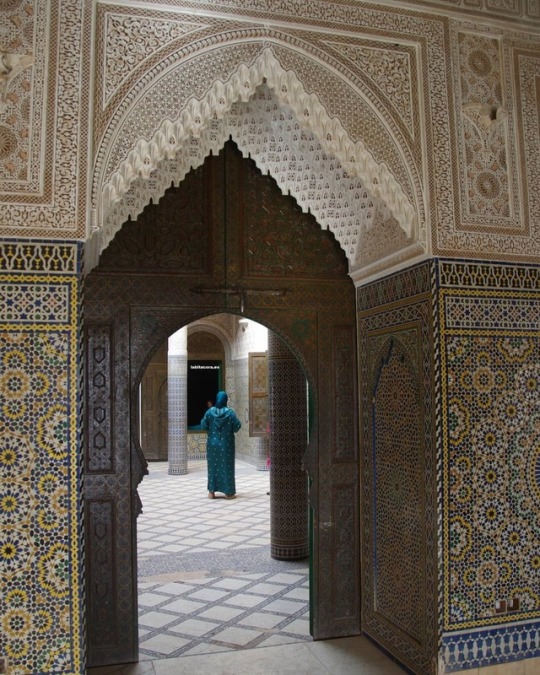
El último propietario de la kasbah de Teoulet, fue Thami El Glaoui fue también el yerno de Menebhi quien fue el gran visir del sultán Moulay Abdelaziz Mehdi Mnebhi, de quien heredó el Palacio Menebhi, hoy es el Museo de Marrakech.
Si quieres más información, puedes copiar y pegar el siguiente enlace:
http://labitacora.es/kasbah-de-telouet/
(en Telouet Kasbah)
https://www.instagram.com/p/BmlpGlongj5/?utm_source=ig_tumblr_share&igshid=1wi3hpcaqxs8r
0 notes
Photo
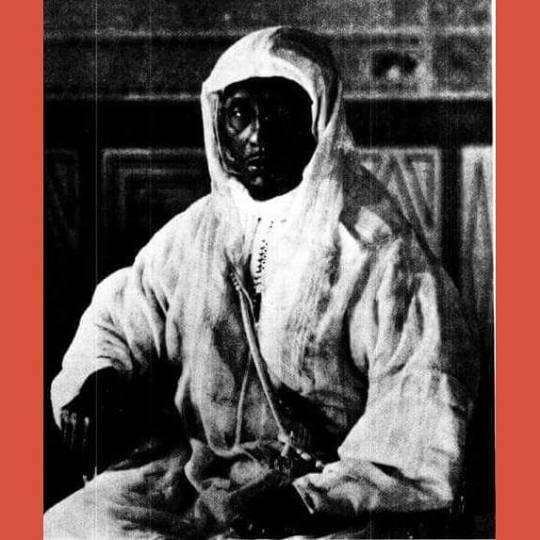
A REAL BERBER NOBLEMAN "THE SO-CALLED BLACK PANTHER" OF MOROCCO Prince Thami El Glaoui or El Haj T'hami el Mezouari el Glaoui 1893-January 23, 1956 aged 79 Prince Thami Glaou was Pasha of Marrakeech, and Lord of the Atlas, was head of a Berber clan, that has been a power in Morocco for more than a thousand years. At the time in which he lived, he was said to be the most powerful native figure in Morocco. This is how a REAL Berber looks like. He is a real Berber and not some Caucasoids who came as a result of being enslaved by the REAL Moroccans as well after the french invasions.
0 notes
Text
Marrakech accueille la foire d’art contemporain africain 1:54
Marrakech accueille la foire d’art contemporain africain 1:54
Après Londres et New York, la foire d’art contemporain africain 1:54 prend escale à Marrakech, ces 24 et 25 février.
Fondée par Touria El Glaoui, la petite fille de Thami El Glaoui (1879-1956), pacha de Marrakech, la foire d’art contemporain africain 1:54 se tient le samedi 24 et dimanche 25 février à la Mamounia de Marrakech.
La manifestation, créée en 2013 à Londres puis exportée à New…
View On WordPress
0 notes